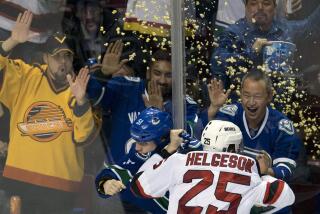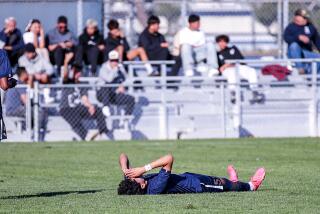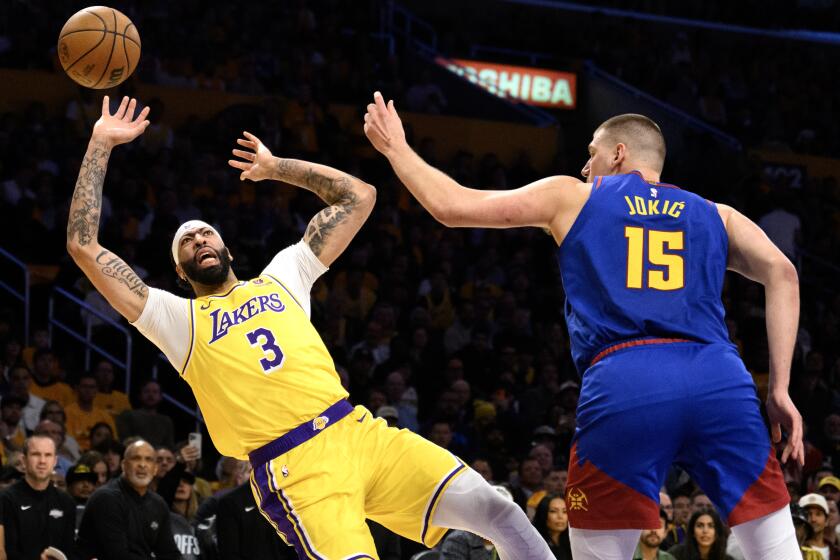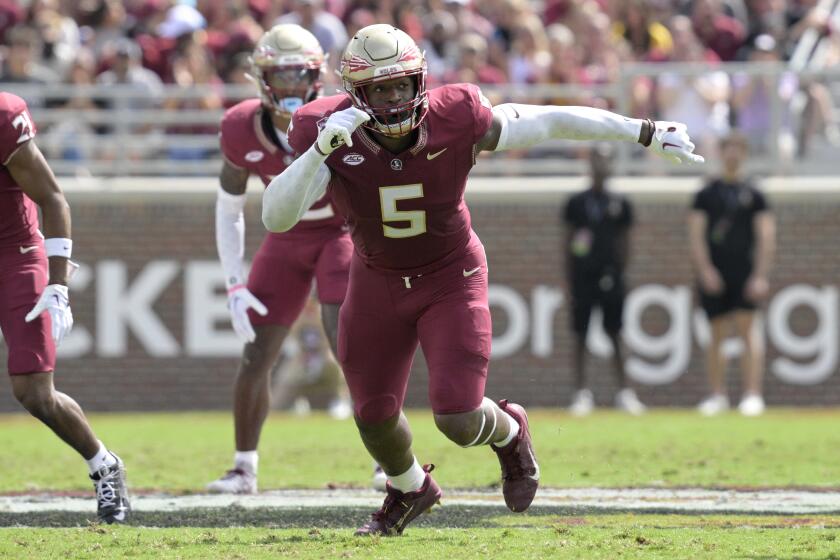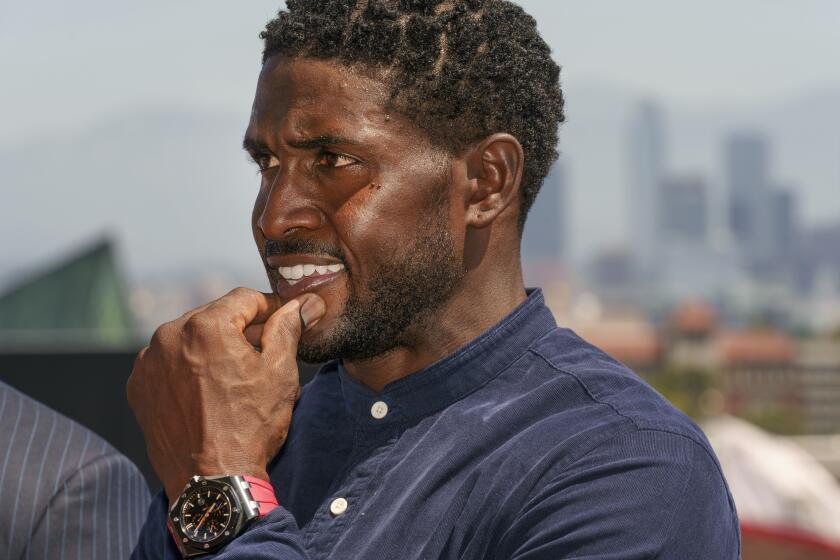Has America grown numb to concussions in sports?
The horror stories in pro sports are coming so fast and furious that their significance is being lost in their numbers. It should be the other way around, but it’s not.
Another concussion. Ho hum.
Player A will sit out two games, Player B a month. Page 5.
Another league investigation, maybe some fines. Yawn.
— After the Oct. 23 game against the New York Jets, San Diego Chargers guard Kris Dielman got on the plane to return home. During the game, he had taken a hit loud enough to be heard on TV. He staggered, looked disoriented and was approached by two concerned game officials. Dielman waved them off and stayed in.
He was examined after the game, cleared to get on the flight and had a grand-mal seizure just as the plane arrived.
Dielman once stopped a contract negotiation that would have made him considerably more money and flew home. He said he was loyal to the Chargers.
Now, he is out for the season, maybe out of the game, period.
— On Nov. 21, Sidney Crosby, one of the better players ever in the NHL, returned to great fanfare for the Pittsburgh Penguins. He had sparked a Stanley Cup championship and had scored the goal that won the gold for Canada in the Vancouver Olympics. To date, he has scored 584 points in only 420 games, a pace that hoists him into the hockey stratosphere of Hull, Howe and Gretzky.
Last season, he suffered a concussion from two hits and was unable to play after the second one Jan. 5. He sat out the rest of the season and remained stifled by the concussion aftermath until he stepped back on the ice Nov. 21. That night, he scored on his first shot and had another goal and two assists.
The sports greatest asset was back — until he took another hit Dec. 5. Now hockey hears the dreaded words again: Crosby is out indefinitely.
— Last week, in a game against the Pittsburgh Steelers, Cleveland Browns quarterback Colt McCoy was hit hard in his facemask by the helmet of charging linebacker James Harrison. It was a brutal hit, the kind celebrated by those TV shows, where four guys sit around, talk macho, ooh-and-ahh, and replay big collisions five times before citing the danger.
McCoy appeared to be out on his feet but returned in a few plays and threw an interception that ended the Browns’ chances of winning. Now his father, Brad, has criticized the Browns’ medical handling of the situation, saying it was obvious how seriously his son was hurt. He said Colt didn’t remember much, including the interception.
Now the NFL is investigating the McCoy case and has suspended Harrison for one game. His hit on McCoy was the fifth penalized illegal hit on a quarterback in the last three seasons. He says he will appeal.
McCoy may play Sunday at Arizona.
The cases just keep coming. The totality is staggering.
McCoy was the ninth Cleveland player to suffer a concussion this season.
The top scorer in the NHL, Claude Giroux of the Philadelphia Flyers, is out because of a concussion.
Derek Boogaard, the 6-foot-7 longtime enforcer in the NHL, played six seasons, accumulated 589 penalty minutes and scored only three goals. Boogaard was involved in an estimated 200 fights and suffered so many concussions everybody but his mother stopped counting. On May 13, he died of a drug overdose. He was 28.
They studied his brain at the Sports Legacy Institute at Boston University and found it had suffered the kind of damage known as CTE (chronic traumatic encephalopathy). CTE leads to depression, mood swings and, occasionally, to suicide.
The same CTE diagnosis was made in Boston with the brain of former Chicago Bears star Dave Duerson. In a stunning moment that, at least momentarily, got the sports world focused on these horrors, Duerson shot himself in the chest in February and left a note, saying he did so to keep his brain intact for study.
Reaction to all this is always muddied by the gladiator mentality that we have brought to sports, starting as low as Pop Warner football. Fans in no physical danger themselves but emboldened by the Internet to be both anonymous and stupid in public, invoke the word “soft.” One did so on the Pittsburgh Post-Gazette’s website in reference to Crosby.
Coaches hide in a bubble of denial and use terms such as “minor concussion” or “concussion-like symptoms.”
Charles Tator of Toronto, among the top neurosurgeons in Canada, was quoted recently on thestar.com as scoffing at this coach-speak and rationalizing.
“There is no [clinical] term ‘concussion-like’ ” he says. “You either have one or you don’t.”
Pro sports commissioners seem to be trying, to varying degrees. The NFL’s Roger Goodell keeps fining and tightening the screws. The NBA’s David Stern, in a sport with less concussion danger, recently established a thorough procedure for reporting and follow-up. The NHL’s Gary Bettman mostly seems to whimper about fans appreciation for the “physicality” of his game.
Even baseball’s Bud Selig ought to pay attention. The namesake of one of the most dreadful diseases of the brain, ALS, is baseball’s Lou Gehrig, who was hit in the head by lots of pitches — no helmets then — and suffered concussions well beyond the norm in his playing days. Last year, a leading journal of neuropathology theorized that Gehrig may not have actually died of Lou Gehrig disease but of the same kind of progression of brain injuries affecting sports today.
Boxing? Forget it. There is no hope.
Our games are deeply institutionalized. Likewise their problems. Fixes must be grass-root.
My grandchildren are 7 and 9. As they get older, their Christmas gifts will lean toward tennis rackets and golf clubs.
More to Read
Get our high school sports newsletter
Prep Rally is devoted to the SoCal high school sports experience, bringing you scores, stories and a behind-the-scenes look at what makes prep sports so popular.
You may occasionally receive promotional content from the Los Angeles Times.
